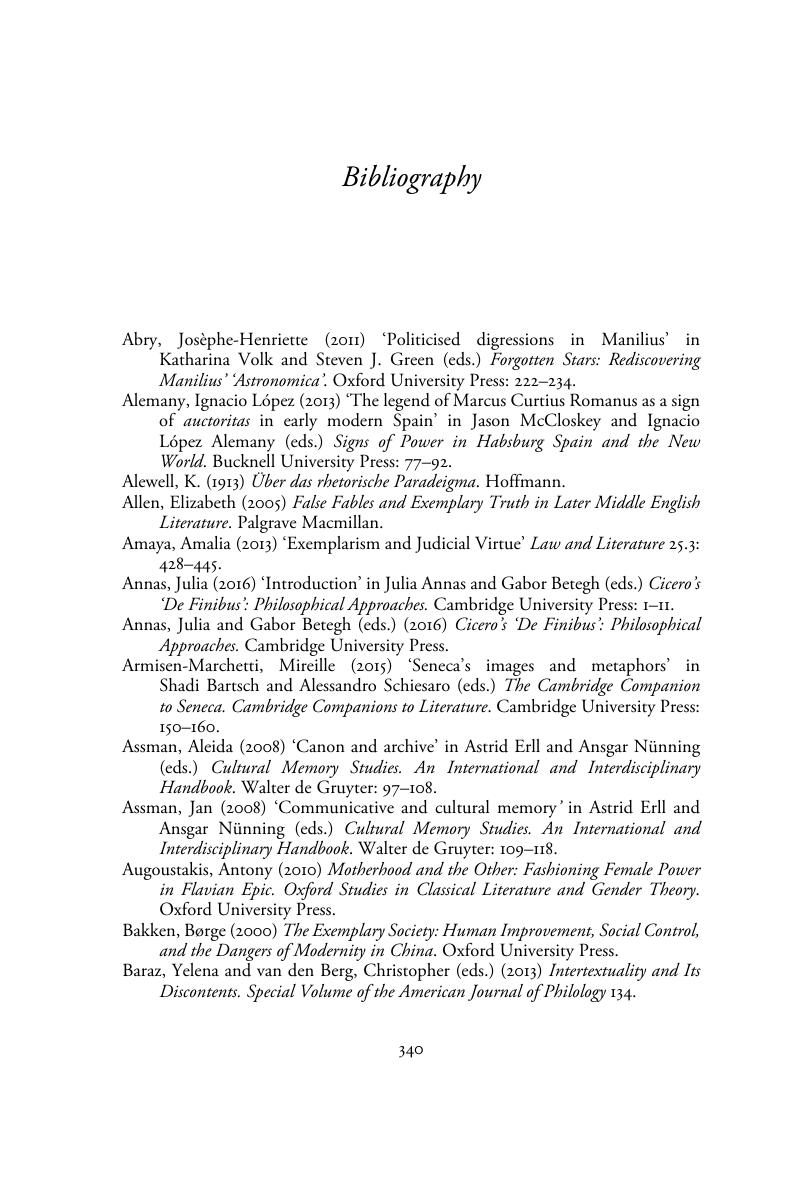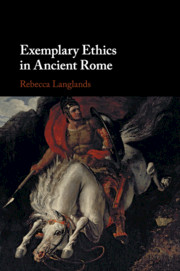Book contents
- Exemplary Ethics in Ancient Rome
- Exemplary Ethics in Ancient Rome
- Copyright page
- Contents
- Preface and Acknowledgements
- Introduction
- Chapter 1 Roman Values and the Archetypal Exemplum
- Chapter 2 The Special Capacity of Exemplary Stories
- Chapter 3 Exploitation, Participation and the Social Function of Exempla
- Chapter 4 The Experience of Learning from Exempla
- Chapter 5 Multiplicity, Breadth, Diversity and Situational Sensitivity in Exemplary Ethics
- Chapter 6 Working Consensus around Roman Exempla
- Chapter 7 Indeterminacy of Exempla: Interpretation, Motivation and Improvisation
- Chapter 8 Sites of Exemplarity: Referentiality, Memory, Orality
- Chapter 9 The Dynamics of Cultural Memory: Forgetting, Rupture, Contestation
- Chapter 10 Changing Sites of Exemplarity: Two Case Studies
- Chapter 11 Diachronic Overview of the Exemplary Terrain
- Chapter 12 Controversial Thinking through Exempla
- Chapter 13 Literary and Philosophical Adventures in the Exemplary Terrain
- Conclusion
- Bibliography
- Index Locorum
- General Index
- References
Bibliography
Published online by Cambridge University Press: 24 August 2018
- Exemplary Ethics in Ancient Rome
- Exemplary Ethics in Ancient Rome
- Copyright page
- Contents
- Preface and Acknowledgements
- Introduction
- Chapter 1 Roman Values and the Archetypal Exemplum
- Chapter 2 The Special Capacity of Exemplary Stories
- Chapter 3 Exploitation, Participation and the Social Function of Exempla
- Chapter 4 The Experience of Learning from Exempla
- Chapter 5 Multiplicity, Breadth, Diversity and Situational Sensitivity in Exemplary Ethics
- Chapter 6 Working Consensus around Roman Exempla
- Chapter 7 Indeterminacy of Exempla: Interpretation, Motivation and Improvisation
- Chapter 8 Sites of Exemplarity: Referentiality, Memory, Orality
- Chapter 9 The Dynamics of Cultural Memory: Forgetting, Rupture, Contestation
- Chapter 10 Changing Sites of Exemplarity: Two Case Studies
- Chapter 11 Diachronic Overview of the Exemplary Terrain
- Chapter 12 Controversial Thinking through Exempla
- Chapter 13 Literary and Philosophical Adventures in the Exemplary Terrain
- Conclusion
- Bibliography
- Index Locorum
- General Index
- References
Summary

- Type
- Chapter
- Information
- Exemplary Ethics in Ancient Rome , pp. 340 - 357Publisher: Cambridge University PressPrint publication year: 2018



